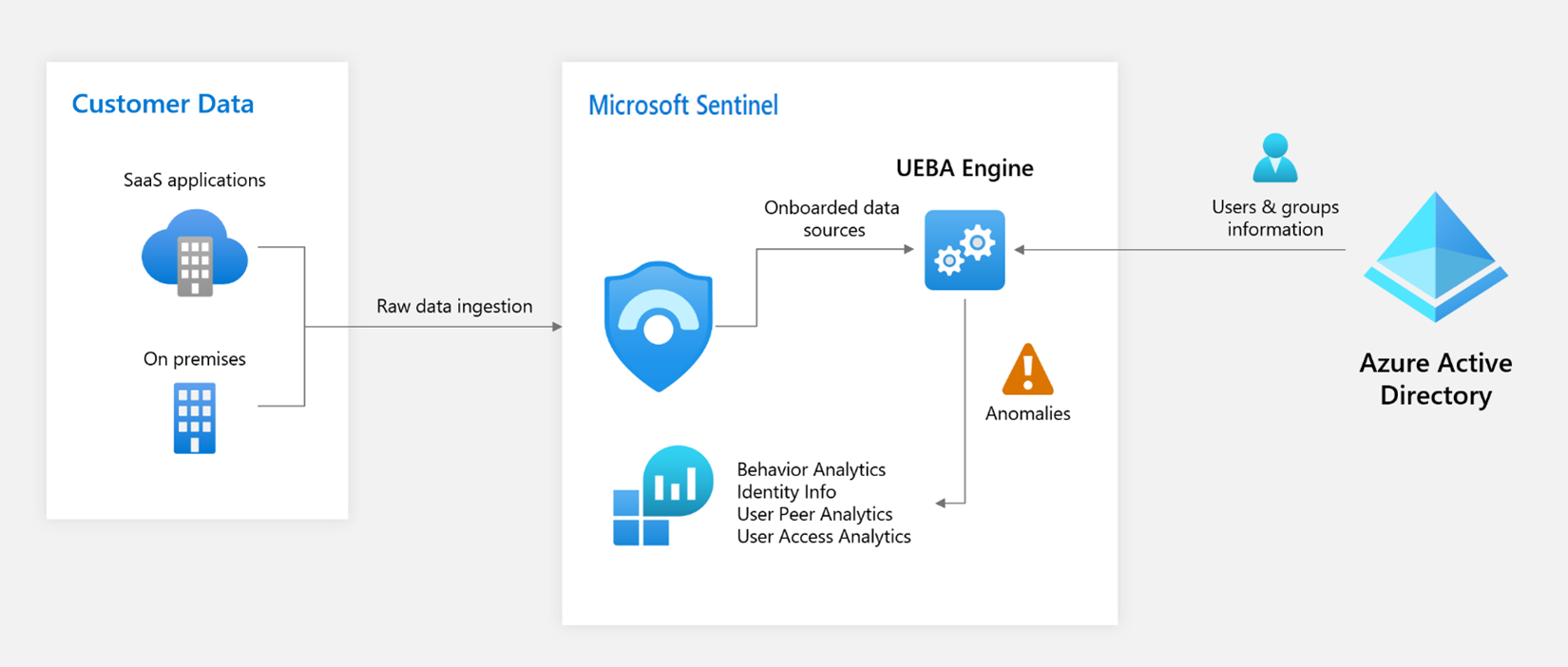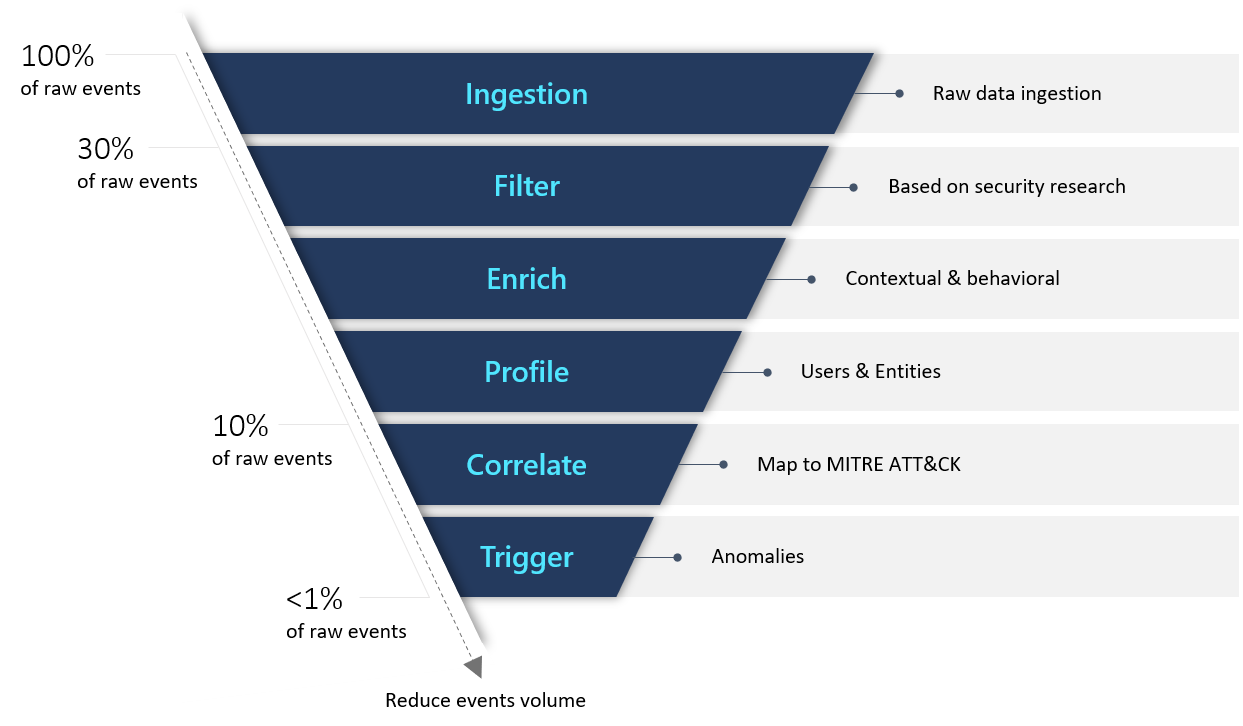Understand behavioral analytics
Identifying threats inside your organization and their potential impact - whether a compromised entity or a malicious insider - has always been a time-consuming and labor-intensive process. When you're sifting through alerts, connecting the dots, and actively hunting, it adds up to massive amounts of time and effort expended with minimal returns. And, the possibility of sophisticated threats evading discovery. Elusive threats like zero-day, targeted, and advanced persistent threats can be the most dangerous to your organization, making their detection all the more critical.
The Entity Behavior capability in Microsoft Sentinel eliminates the drudgery from your analysts’ workloads, and the uncertainty from their efforts. The Entity Behavior capability delivers high-fidelity and actionable intelligence, so they can focus on investigation and remediation.
As Microsoft Sentinel collects logs and alerts from all the connected data sources, it analyzes and builds baseline behavioral profiles of your organization’s entities (users, hosts, IP addresses, applications etc.). The analysis is across the time and peer group horizon. Microsoft Sentinel uses various techniques and machine learning capabilities, and can then identify anomalous activity and help you determine if an asset has been compromised. Not only that, but it can also figure out the relative sensitivity of particular assets, identify peer groups of assets, and evaluate the potential impact of any given compromised asset (its “blast radius”). Armed with this information, you can effectively prioritize your investigation and incident handling.
Architecture overview

Security-driven analytics
Microsoft adopted Gartner’s paradigm for UEBA solutions, Microsoft Sentinel provides an "outside-in" approach, based on three frames of reference:
Use cases: Microsoft Sentinel prioritizes for relevant attack vectors and scenarios based on security research aligned with the MITRE ATT&CK framework of tactics, techniques, and subtechniques. The prioritization identifies various entities as victims, perpetrators, or pivot points in the kill chain. Microsoft Sentinel focuses specifically on the most valuable logs each data source can provide.
Data Sources: While first and foremost supporting Azure data sources, Microsoft Sentinel thoughtfully selects third-party data sources to provide data that matches our threat scenarios.
Analytics: Microsoft Sentinel uses machine learning (ML) algorithms, and identifies anomalous activities that presents evidence clearly and concisely in the form of contextual enrichments. See the examples below.

Microsoft Sentinel presents artifacts that help your security analysts get a clear understanding of anomalous activities in context, and in comparison with the user's baseline profile. Actions performed by a user (or a host, or an address) are evaluated contextually, where a "true" outcome indicates an identified anomaly:
Across geographical locations, devices, and environments.
Across time and frequency horizons (compared to user's own history).
As compared to peers' behavior.
As compared to organization's behavior.

Scoring
Each activity is scored with “Investigation Priority Score”. The score determines the probability of a specific user performing a specific activity based on behavioral learning of the user and their peers. Activities identified as the most abnormal receive the highest scores (on a scale of 0-10).